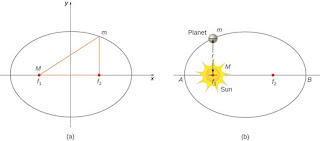Discovering the Secrets of the Universe: Kepler's Laws of Planetary Motion
When the Danish astronomer Tycho Brahe died in 1601, he left behind an incredible gift to science—comprehensive notes on the positions of nearly 1000 stars, data which was later used by Kepler to establish his famous three laws of planetary motion. For centuries, scientists had been observing the motions of planets across the sky; however, with Brahe’s data, Johannes Kepler was able to develop three laws that accounted for these motions in precise detail.
The theories in place before Kepler
Before Johannes Kepler came along, astronomers had a relatively simple description for planetary motion. They believed that heavenly bodies moved in perfect circles around Earth, and because all heavenly bodies (the sun, moon, planets and stars) orbited Earth in equal time periods, it was thought that they were equidistant from Earth at all times. Though there were some problems with their theory - mainly that it predicted that Mars should appear four times bigger at certain points in its orbit - these early astronomers did not question their basic assumptions about celestial motion. After all, everyone could see for themselves that Mars remained roughly in one spot relative to a single object on Earth: our moon. The secret would have to wait until another day. ...
What is Kepler's Law
The planets move around the sun in an elliptical orbit. Ellipses are not circles, so they have more area when they are closer to each other. This means that it takes longer for them to be farther away from each other. The law also states that all planets travel at different speeds, but take equal amount of time to make their orbits around the sun. The third law states that all planets orbit at different distances from the sun and there is a smaller gap between each planet than there is between any two planets closer together. In simpler terms, it means that as one planet moves further out from another, its distance from it decreases as time goes on until its back where it started—at which point it begins moving further away again.
What we know now about astronomy
We've learned a lot about astronomy over time, as technology has allowed us to see farther into space and further back in time. Here are some fun facts about what we know now compared to what was known just a few hundred years ago. In ancient times, it was assumed that Earth was in its stationary center while all other planets and stars orbited around it. This geocentric model lasted until early Copernican theory when evidence started to point towards a heliocentric system - Earth revolving around Sun - as fact.
Understanding what it means to be an orbit
In order to understand what it means to be an orbit, you must first understand what it means to be a planet. A planet is any celestial body that orbits around a star. Being part of an orbit is incredibly similar to being in a relationship. The Earth is constantly orbiting around our Sun and our Moon orbits around us all year long. Both are things we would not want to live without; just like we would not want to break up with our significant other just because they have something wrong with them! In order for a relationship or an orbit to function properly, there must be trust and respect between both parties. Likewise, one cannot successfully complete their designated path without adhering and respecting Newton’s laws.
The concept of epicycle (the term used by Ptolemy)
The concept of epicycle was used by ancient astronomers like Ptolemy to explain discrepancies in predicted positions caused by other errors. The term was borrowed from its original mathematical use, meaning a circle that revolves around another circle. The centre of an epicycle is called an eccentric (Greek ἐκ out + κέντρον centre). It is also known as a deferent and equant.

